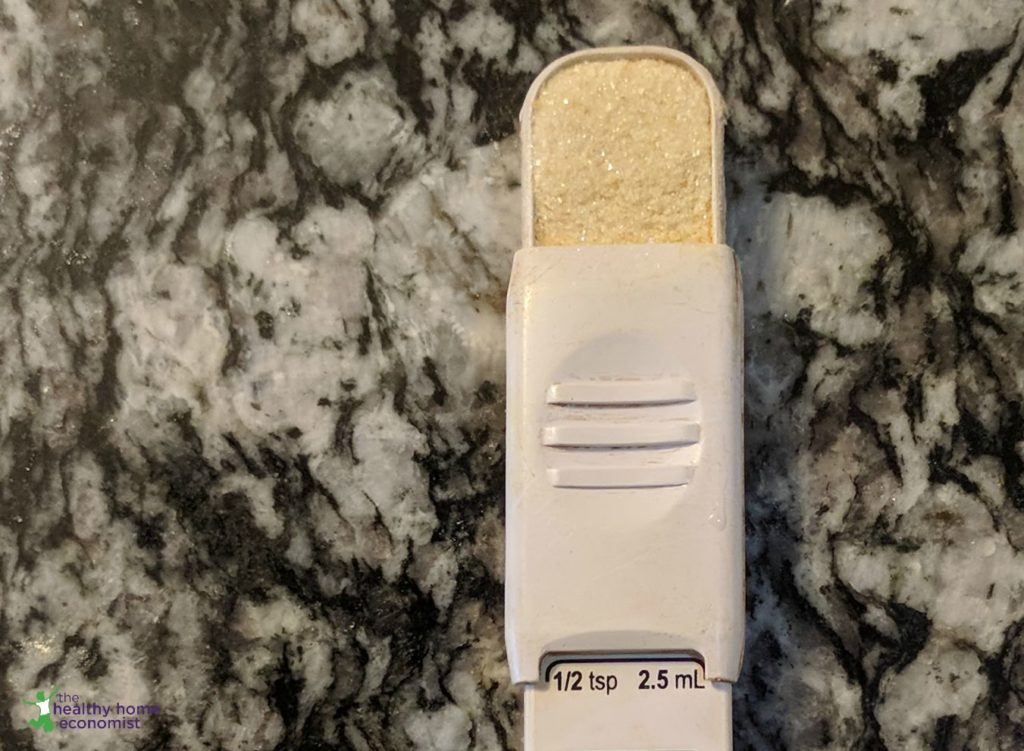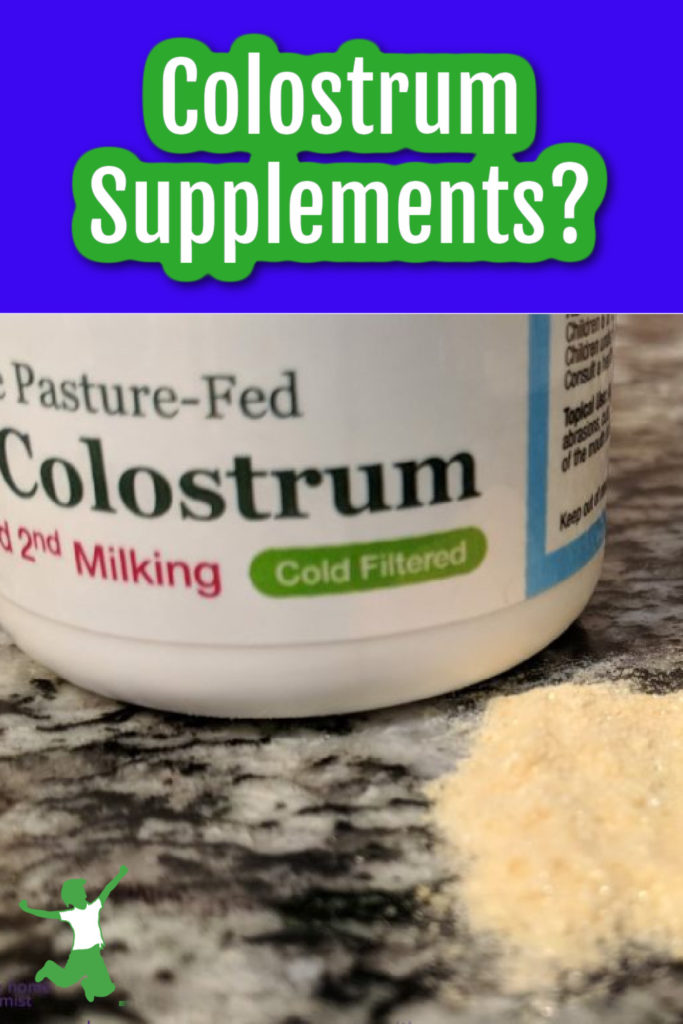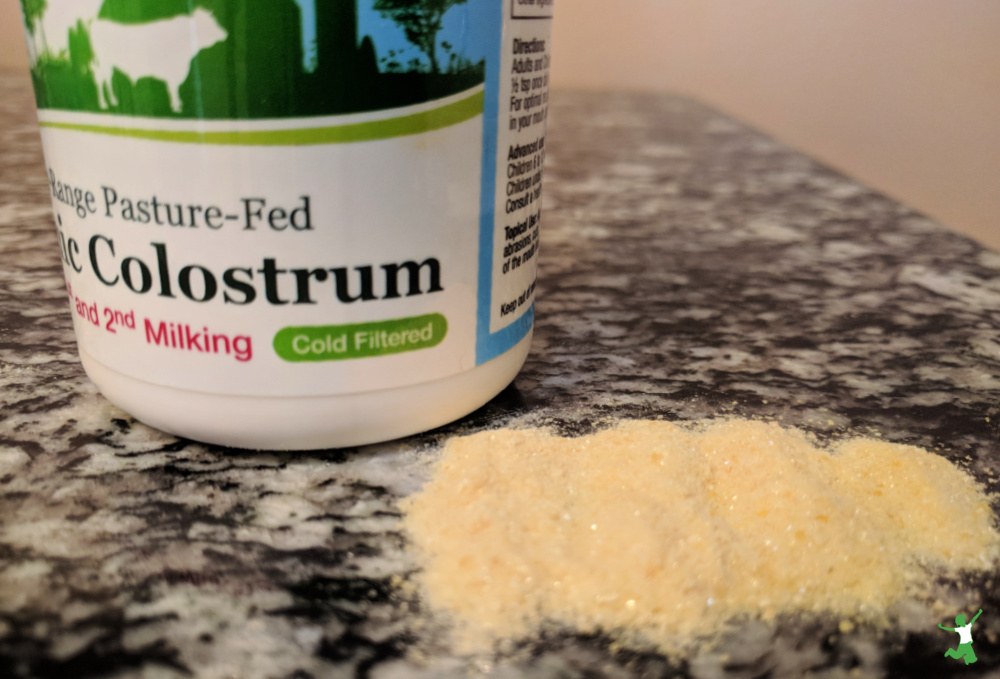The benefits and possible drawbacks of fresh and powdered colostrum supplementation as Mother Nature’s most primal and potent superfood with an overview of the scientific research using it to boost the immune system in children and adults.
Colostrum is Mother Nature’s most primal and potent immune system strengthener.
Babies need it. Moms, cows, and other mammals make it. But does it make sense as a supplement?
Or how about as a fresh superfood source from your local, grass-fed dairy farm? Let’s examine this popular immunity booster and see if it is worth the cost
What is Colostrum?
Colostrum is the first milk mammals produce after giving birth. Production starts a few weeks before delivery when the pregnant female’s mammary glands begin to create it in very small amounts. Colostrum is loaded with antibodies and other immune-boosting co-factors that defend a newly born mammal from disease.
Like breastmilk, colostrum shows a degree of adaptability to the needs of the baby and can even change over time. Note, however, that “time” is short when it comes to colostrum. Cows and humans produce it for only 3-4 days!
For newborns, colostrum is a true superfood. Science and studies show it has all sorts of benefits that no substitute can match. It contains a host of beneficial enzymes, antibodies, and growth factors specifically made for the baby.
One of these is lactoferrin, a multi-functional protein that is an important component of the human immune system. It is highly anti-bacterial, anti-viral, and anti-fungal, but quickly destroyed by heat.
Interestingly, some of these beneficial substances do not continue to appear in mammalian milk during the rest of lactation. For this reason, some people consider colostrum as a superfood supplement. (1)
Goat vs Cow Colostrum
While most colostrum on the market is from cows, some companies and farms also offer goat colostrum.
Just like with fluid and other milk products, some people tolerate dairy from certain animals better than others.
If you don’t do well on bovine milk either from A1 or A2 cows, then look for goat milk supplements.
Fresh is Best!
Given the fragile nature of many of the most beneficial components of colostrum, if it is something you want to try, know that fresh and raw is best. But be ready to pay for it – fresh colostrum is expensive! In addition, fresh colostrum is extremely hard to source and only available at certain times of the year.
Cows don’t make much of it, and they don’t make it for long. Good farmers know that they can only take a small amount away from the calves without harming them. Fresh frozen is also a good option if you have a condition that something like colostrum may help.
Either way, almost all types of good quality colostrum…fresh, frozen, or dried and powdered…can be pricey. (2)
What Conditions Can Colostrum Benefit?
There is some research showing that colostrum may be helpful for resolving a number of conditions. One that seems especially promising is helping the digestive tract get back on track, say after antibiotics or other disruptive events. This includes dealing with diarrhea and other digestive distress. (3, 4)
But overall, the research is mixed on colostrum and supplements made from it. Mostly small studies provide conflicting results and marginal benefits. An occasional one shows promise, but far more research is needed. (5)
Note that many companies claim that studies support their health claims for colostrum, but when you go look for any supporting studies, they don’t seem to be saying what the companies think they are saying! This is a common pitfall to watch out for in supplement marketing material. (6)
From a clinical perspective, respected practitioners such as Chris Kresser also report underwhelming results. (7)
Drawbacks of Supplementation
A number of researchers raise valid concerns about some components of colostrum. The substances that are beneficial for newborns may actually be problematic for older children and adults.
The research in this area is sparse, but some scientists point out that a mature digestive system neutralizes a lot of the growth factors and other beneficial substances present in colostrum before they are absorbed.
Perhaps this is why Mother Nature wisely provides this food for a short period of time and only for newly born mammals with immature digestive systems!
Adults with compromised immune or digestive function, the same people who would most benefit from colostrum, also face the greatest possible risk.
This may indicate why many researchers have seen poor clinical results with colostrum for most patients. The beneficial compounds never make it into the small intestine where they can be absorbed into our bodies.
Colostrum Processing
Like with any supplement or superfood, not only do you need to check on the quality of the main ingredient but also the quality of any additives found in the final product. Note, some brands say they are “soy-free,” but that doesn’t mean that the animals didn’t eat soy or even GMO soy!
Given that research confirms that soy isoflavones easily find their way into milk, meat, and eggs, if you are soy sensitive, don’t trust soy-free labels unless the company also gives clarity on their animal feeding practices. Colostrum from pastured animals given no antibiotics or growth hormones is always optimal.
With colostrum supplements, a number of problems present themselves. Many beneficial components in colostrum don’t take kindly to drying, processing, powdering, handling, and storage, similar to probiotics and whey protein powder.
Even if a company carefully collects and processes the colostrum, that doesn’t guarantee that during storage or shipping it won’t be exposed to conditions that degrade its quality. Buyer beware!
For this reason, with light, temperature, and age-sensitive supplements, I purchase them only during appropriate times (neither too hot nor too cold) of the year from companies that guarantee proper storage, handling, and shipping.
Bioavailability
Colostrum has another potential drawback mentioned above. Many of its components do not survive digestion in older children and adults. Some manufacturers claim to sell products that bypass this problem through proprietary technology, such as this brand:
Sovereign Laboratories’ proprietary in-house Liposomal Delivery (LD) system is an applied coating which allows colostrum to readily dissolve in liquids and ensures the colostrum will bypass digestion, be transported through the bowel wall, circulate throughout the body, reaching organs and cells while remaining bioavailable and healing at the cellular level. (8)
Evaluating the truth of such claims is beyond the scope of expertise of this article. But as mentioned above, buyers beware particularly for specialty colostrum supplements that are even more expensive. Carefully consider the fact that mature digestive systems don’t allow a wide range of compounds in colostrum to make it past digestive defenses.
Dosage
1/2 teaspoon or 1.5 grams once per day is a typical recommended dosage of colostrum powder for children 12 years old and up. Taking on an empty stomach and letting the powder dissolve in the mouth before swallowing apparently produce optimal results.
Hence, if using capsule form, it seems best to break them open and empty the powder directly onto the tongue rather than swallowing the capsules.
Note that some brands recommend more. The liposomal delivery (LD) brand discussed above suggests a serving of 5 grams (about 2 teaspoons) per day. Follow manufacturer instructions and reach out to a trusted practitioner if unsure.

Hyper-Immune Bovine Colostrum (HIBC)
Not to be left out of a potentially lucrative market, pharmaceutical companies have jumped onto the colostrum bandwagon with the development of the drug known as hyperimmune bovine colostrum (HIBC).
The FDA approved HIBC under orphan drug status, which grants special status to biological products used to treat rare diseases or conditions. The manufacturing process is as follows:
[HIBC] is produced by cows that have received vaccinations against specific disease-causing organisms. The vaccinations cause the cows to develop antibodies to fight those specific organisms. The antibodies pass into the colostrum. Hyperimmune bovine colostrum has been used in clinical trials for treating AIDS-related diarrhea, diarrhea associated with graft versus host disease following bone marrow transplant, and rotavirus diarrhea in children. (9)
Should You Take It?
Ultimately, whether or not you choose to take colostrum as a supplement is up to you. The potential toxicity risk is slim to none if from pastured animals.
However, its effectiveness is unproven although there are many anecdotal cases of success.
I personally am unsure how I feel about this particular pharmaceutical product. I believe the late Jerry Brunetti of the Weston A. Price Foundation Honorary Board used it in his battle with cancer, with what appeared to be at least short-term success.
The late Rami Nagel, author of the popular book Cure Tooth Decay was also a fan even producing his own supplemental version at one point.
For some disease conditions, I would consider trying HIBC before more synthetic, toxic, side effects-ridden pharmaceuticals, especially if I lacked other options.
Have you tried colostrum or know someone who has? What were the results?

(1) What is Colostrum?
(2) Premier Research Labs Colostrum-IgG
(3) Bovine Colostrum
(4) Bovine colostrum: an emerging nutraceutical
(5) Bovine colostrum may boost the immune system
(6) If a medical cure looks too good to be true, it probably is
(7) The Healthy Skeptic Episode 12 – “Grab Bag” Super Special
(8) Colostrum-LD Liposomal Delivery – Colostrum Powder
(9) Bovine Colostrum








Jain, I wanted to know if you have tried many brands and what or which one you’ve decided you like the most and why.?
Kelli, can you provide the brand you purchase.
Thanks
I spent several years researching raw dairy. A holistic healer we work with has a farm she reccomends.
If you find a clean local farm who treats their animals well it’s a good starting point. You can freeze in ice cube trays to have throughout the year.
hello
I’m interested in trying colostrum if only to boost my immune system but not sure which brand/company. Any recommendations that I can look into?
Hi John, thank you for this article. I started Colostrum 19 mos ago due to my Crohn’s disease and have regained my life back!!! So far no flares, no colds, no flu!! This is coming from someone who spent at least 2 weeks a year in the hospital with a hole in my colon. I am forever grateful for this product! However, as your article touches on, you must be careful of what colostrum you consume. They are not all alike and most have fillers and are defatted and fat sprayed back on. Kinda takes the natural right out of it huh? There is only one Certified colostrum out there that I would suggest and is even GMP certified! So I ask myself daily why every man, woman and child is not taking it. The many health benefits are never ending. Research, Research, Research!! Google what’s colostrum and read for hours. I hope you’ll all keep researching and give Colostrum a chance.
I am glad you have had great results but I wanted to make you aware my children’s pediatrician said should only use in cycles bc it can rev immune system up too much. We use raw bovine from a local farm.
I have Crohn’s as well.. Can you say which colostrum brand you used?
Thanks!
So grateful to hear that it helped you! What brand do you recommend?
I developed hip bursitis several years ago after several weeks vacationing in the mountains. I tried all the normal anti-inflammatory foods and supplements–even physical therapy–with no improvement. The pain kept me awake at night. I noticed an ad for a colostrum product which claimed that it could help arthritis and other conditions, so I tried it. Within a week, the pain was greatly improved, and within a couple of months, it was almost completely gone. I continued taking it (capsules) for a year or so, then stopped, and the bursitis has not recurred. I noticed that the company, Advanced Bionutritionals, has recently stopped making this product, so if I need it again, I guess I’ll have to find another source.
Hi Lynn. I take a high quality colostrum that is better than any other I have tried. It has helped my whole family beyond what we had hoped. It has changed my life. I struggle with debilitating fatigue, severe pain, breathing problems and repeated respiratory infections. The colostrum helps all of these problems.
It’s works for me! I started taking colostrum internally over 15 years ago, after receiving advice to do so during a colonic series. I had no opinion either way about its benefits until one day on the way to the airport. I slipped and fell getting into the cab and landed hard on my shin. It hurt so much I almost cried. Almost immediately the spot on my shin swelled up the size of half a baseball. I remembered the information the colonic ‘therapist’ had given me to read about colostrum, and I was carrying my capsules of colostrum in my purse. So once I got checked in, I wetted the area with water and caked the colostrum powder on my shin. When the plane landed, the swelling and pain were completely gone. (Likely before this too.) Afterward, there was no bruising at all. One of the benefits in my experience is whenever I’m consistently taking colostrum I rarely bruise. If I’m not taking it, I bruise like normal. A few years after the shin incident, I was walking in a crosswalk and got hit by a car that was going 30+ mph. When I met with a lawyer days later, he took pictures of my legs where I’d been hit and said it didn’t even look like I was hit by a car because the bruising was so minimal (which he wasn’t happy about — I still had pain though.) I’ve always used the same brand, and mostly capsules but more recently switched to the powder form because it’s less expensive. It gives me some energy and I usually can’t sleep if I take it in the evening. Large doses have helped me ward off viruses. It’s sped up healing when I’ve used it externally, but when I’ve noticed the anti-bruise factor it’s typically after taking it internally for at least 2 weeks. Obviously sometimes the external application has helped a lot too.
Jain, will you please share what brand you use? Thank you!!
Over 50 years ago, when I was a kid, our family lived next to a diary farm and my mother would get colostrum from the farmer. All I remember is that she would make pudding with it, which I found delicious because it was so creamy.
We use raw colostrum from our N. IN Amish farmer. It’s from grass fed Jersey and Guernsey cows. He freezes it when he has extra and so we can almost always get it. I add it to our smoothies a few times a week and feel like it keeps us (myself and 7 children) very health! We pay $6 a qrt. Thanks to those farmers out there willing to go the extra mile and thanks to this blog for keeping me in the know!
I’ve been taking it for years (approx 15) and believe that it has helped tremendously to strengthen my immune system as I rarely (and that should be emphasized) get sick with any kind of illness.
Funny timing: I just looked at the Sovereign Laboratories product today after a recommendation for it to heal digestive issues. I’d love to hear the experiences of people in this HHE community.